The victims of the Katyn massacre were not only Catholics and Catholic clergy. The genocide of the spring of 1940 tragically reflected the somewhat forgotten phenomenon of pre-war Poland:its multiculturalism and multi-ethnicity.
One cannot ignore this crucial fact for the characterization of the period 1918–1939. Approximately one third of the citizens of the Second Polish Republic professed a religion other than the Roman Catholic religion and had an ethnic affiliation other than Polish. This group was dominated by Ukrainians, Jews and Germans.
In the September campaign, the number of non-Roman Catholic soldiers reached 30 percent of the total manpower. It is even striking that among the 33 identified victims of the Katyn massacre recruited from the clergy, nearly 20 percent (6 people) represented minority religions - in this sense, the Soviets also killed the multicultural identity of the Second Polish Republic.
The multicultural Polish army
This multi-ethnicity had its shadows and highlights - just like today. The importance of the problem is easy to realize thanks to the following procedure:imagine that now, in 2020, 33 percent of Poland's population (i.e. less than 13 million) represent ethnic minorities. No modern European state has such a proportion today, even after the migration crisis initiated in 2015. What would our reality look like?
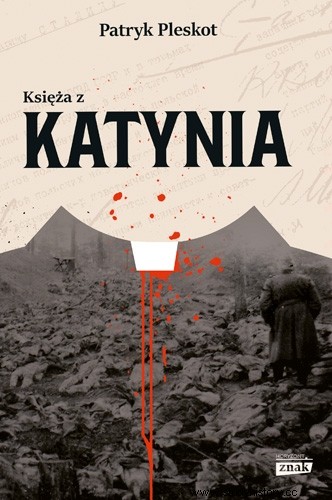
The article is an excerpt from the book Priests of Katyn , which was recently released on the market by Znak Horyzont
publishing houseLeaving this question open, I would like to add that in the interwar period, at least at the level of military chaplaincies, the cooperation of various denominations was relatively efficient. The Orthodox, Protestants (Evangelicals), Greek Catholics, Jews, and even Muslims and Mariavites had their religious structures in the Polish Army. All the communities functioned under the aegis of the Ministry of Military Affairs.
Roman Catholicism was represented by the already mentioned Field Bishop Curia headed by the bishop-general. One of the departments of the curia dealt with the Greek Catholic Church belonging to Catholicism. Other religions were dealt with by the Bureau of Non-Catholic Denominations, subordinate to the Ministry of Military Affairs. On the eve of World War II, the office was divided into four so-called Main Offices:Orthodox Church, Evangelical-Augsburg Confession (Lutheran), Evangelical-Reformed (Calvinist) and Evangelical-Union and Mosaic Confessions.
The least numerous were the faithful of Protestant churches:they constituted about 1.5–1.8 percent of the soldiers. They had one garrison temple. There were practically no representatives of the Evangelical-Union Church, which usually recruited Germans living in the Second Polish Republic.
About 6–8 percent of the soldiers declared the Mosaic faith. As part of the military ministry, the state financed them 20 community synagogues and 12 synagogues in prisons and hospitals.
Almost two-thirds of non-Roman Catholic soldiers were Orthodox. Orthodox chaplaincy was organized in 4 pastoral districts with 4 garrison churches and 6 military chapels.
The remaining, smaller denominations (Baptists, Mennonites, Old Believers, Mariavites, etc.) did not have a separate structure in the Polish Army, and their affairs were dealt with by the General Department of the Bureau of Non-Catholic Denominations. The situation of a few Muslims was specific in this context. The Ministry of Military Affairs agreed to finance the activities of one "volatile" mullah who visited garrisons where Allah's followers (mainly Tatars) served.
In general, non-Catholic chaplains were somewhat loosely associated with specific military formations :as a rule, they acted as the so-called personal chaplains in a specific area. Perhaps for this reason, at the time of mobilization in 1939, many of them did not reach the centers provided for them.
We know that no imam probably died as part of the Katyn massacre. The only official priest of the Tatars, Ali Ismail Woronowicz (formally the imam of the Muslim Warsaw commune), was summoned to appear in the Nationality and Religious Department at the Government Commissariat after the outbreak of the war. There he was ordered to go to the 1st Tatar Squadron in the 13th Vilnius Uhlans, where he had previously worked as a chaplain. Woronowicz intended to carry out this order, but earlier he decided to take his wife, who was expecting a child, to his family. He managed to implement this plan, but did not manage to join the unit and finally stayed in Olecko.
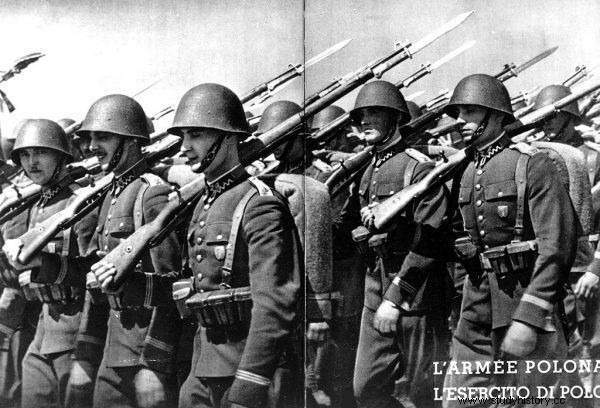
The Polish army in September 1939 was multicultural
On September 17, the Russians entered there. Initially, the clergyman was allowed to work in the local school, but after several months he was arrested by the NKVD on the fake suspicion of espionage. The communists did not intend to tolerate a Polish Muslim in their territory. It is not certain what happened to him next:he probably died (or was killed) during the evacuation - after the Germans attacked the Russians in June 1941. So although Woronowicz did not end up in prisoner of war death camps, he did not survive much longer than the Katyn victims.
All the people described below were murdered in the Katyn forest. The brutal death destroyed religious divisions, philosophical differences, different theological and historical concepts, social. Faced with the real, apocalyptic evil, there were no better or worse believers.
Works in Katyn
Three years after the Katyn massacre, the Germans, after the Soviets were pushed out of Ukraine and Western Russia, discovered mass graves in the vicinity of the Gniezdowo railway station. They quickly decided to organize the exhumation: the opportunity for a propaganda attack on the enemy was too great to miss.
It was the end of April 1943. Marian Wodziński, a 32-year-old handsome forensic doctor from Krakow, still could not get used to the daily tedious work in the Katyn forest. Identification of the body, formally carried out under the auspices of the International Red Cross and with the permission of the Germans, was merciless, and there was no end in sight. Soviet prisoners of war, taken from Smolensk, as well as local Russians dug into the next layers of corpses. Row after row, up to twelve.
The bodies were almost pressed together, the torso flattened, the bellies deeply sunken, the noses and genitals pressed flat. A specific putrefaction process causing the so-called corpse wax, hindered the separation of individual bodies. Fatty wax - a cheesy, relatively waxy, hardened yellow-white or gray mass - compacted the corpse into a ghostly lump of arms, legs, torso, and skulls partially covered with dried skin.
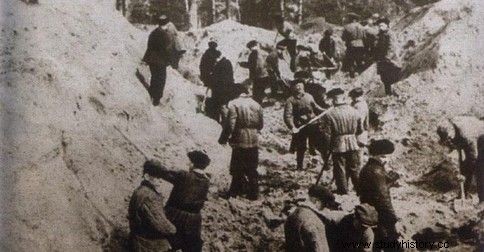
Exhumation in Katyn
It was hard to get individual bodies out of this mass with your bare hands. The Russians, working in pairs, had to literally hack corpses with iron hooks, shovels and even pickaxes. Then the next two carried hewn bodies, which were hit, among others, by to the nearby work station of Dr. Wodziński.
Another body has just been brought in for inspection. Wodziński exchanged a few remarks with his colleague, Ferdynand Płonka, and they both went to work. Płonka shaved the hair on the neck of the corpse. About three centimeters below the occipital bone, in the midline of the body, saw an entrance wound :circular opening less than eight millimeters in diameter.
"A typical thing," thought Wodziński. Then, with a skillful movement, he cut the skin of the back of the head. As expected, the gunshot channel ran forward and upward:the bullet entered the cranial cavity through the base of the occipital bone.
The men cleaned the soft parts from the intake opening and looked at it more closely. It had distinctive smooth outer rims that widened towards the inside of the skull. They quickly identified the exit wound. As usual, it was located on the forehead, more or less on the border of the hairline, also in the middle part. It happened that these holes were slightly to the right or slightly to the left. Inside, Wodziński found small bone fragments.
After measuring the wound and cutting the skin, the men began cleaning the edges of the wound and analyzing the exit opening itself in the frontal bone. It was almost twice the size of the inlet, had a truncated cone shape, had uneven outer edges, and had a diameter of approximately 15 millimeters. Using the probe, they determined the trajectory of the shot.
They found that the cartridge damaged the core extension and resulted in the immediate death of the victim. This time it was not necessary to open the skull - this was what Wodziński decided in more difficult cases. It was then that he most often found extensive cerebral hemorrhage as the main cause of death. It was very rare for him to find a bullet stuck in the skull.
Finally, Wodziński and Płonka measured the body, at the same time trying to notice any other injuries. As was the case most often, nothing was found. "At least he died right away," thought the doctor for the hundredth time, remembering the rare cases of injuries to a corpse, showing that the victim had been fighting for his life to the end.
This scenario repeated itself from morning to evening, day after day. In mid-May, Wodziński could no longer cope. So far, he has inspected hundreds of bodies. Now he was only able to analyze selected cases - most of all those victims for which no documents were found.
He remained in Katyn until the end of the exhumation works, finally identifying, together with other teams, about 2,800 bodies. One of them, at number 2455, belonged to Mikołaj Ilkow.
Mikołaj Ilków
The Uniate Church (belonging to the family of Greek Catholic Churches) is an interesting social phenomenon, a manifestation of the real influence of Polish culture and the political concept of the First Republic on the lands of Eastern Europe. As we know from school textbooks, it was created shortly after the creation of the Polish-Lithuanian Commonwealth, as a result of the signing of the Union of Brest in 1595. By virtue of the union, the structures of the Orthodox Church operating on the territory of the Republic of Poland submitted to the supremacy of the Pope in the Vatican (thus joining the Catholic community), while maintaining their own administrative solutions and the liturgy of the Eastern Rite.
This concept was interesting, but at the same time tragic. For natural reasons, the Orthodox churches resisted the Uniates. Treated as a manifestation of Polish cultural expansion (although the faithful were recruited mainly from Ruthenians and Ukrainians), in the following centuries the Uniates were fought - often brutally - by the invaders and emerging regional nationalist movements. The apogee of repression came after the victory of the Bolshevik revolution in the territories controlled by the new totalitarian communist state.
As a result, the Uniate Church practically ceased to exist outside the borders of the reborn Second Polish Republic. Within its borders, it functioned as the Greek Catholic Church in Poland and was divided into three eparchies. Most of the faithful lived in the eastern provinces. Although in the interwar period there was an outflow of followers either towards Latin Catholicism or Orthodoxy (especially after 1924, when the Polish Orthodox Church gained independence, i.e. autocephaly), until the outbreak of the war the Greek Catholic Church had over 300,000 members and had nearly 2,400 priests diocesan.
One of them was Mikołaj (Mykoła) Ilków. He was born on December 10, 1890 in Przewoźiec, in a Uniate family. The village was situated on the Łomnica River, 20 kilometers north-west of Stanisławów - at that time in the Austrian partition. The Uniate Church (called by the Austro-Hungarian authorities Greek Catholic) enjoyed relative freedom there - at least officially, because in practice it was under constant pressure from the Orthodox Church and Ukrainian nationalists. Ilków himself, son of Mikołaj and Katarzyna (née Andruchow), was of Ukrainian (or Ruthenian) nationality.
Nationality as nationality, but when it comes to cultural identity, Mikołaj belonged to a typical borderland group for which the complete separation of Polishness from Ukrainianness or "localness" - with all the ambiguity of these terms - was a difficult, if not impossible task. To simplify it, it could be said that after 1918 he was a Ukrainian, and at the same time a loyal citizen of the Second Polish Republic.
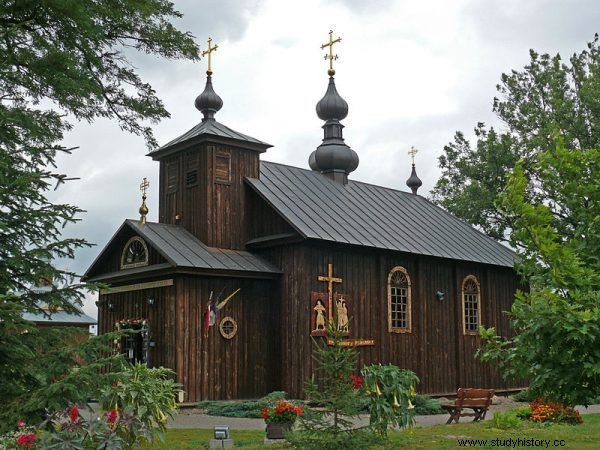
Uniate Church st. Nicephora
He received basic education in the town closest to his native village, i.e. Kałusz. Then he moved to Stanisławów, where he studied in an eight-grade gymnasium with Polish as the language of instruction, which was still named after Emperor Franz Józef. He grew up in a family closely related to the Church. His father served as a parish deac in his native village, that is, someone resembling a cantor, who at the same time took care of the proper conduct of services. He was also the chairman of the local Greek Catholic community.
Mikołaj junior from an early age lived in the atmosphere of an Orthodox church. Perhaps that is why among the school corridors of the Stanisławów gymnasium a priestly vocation or a decision to continue his father's mission began to germinate there. As a result, after graduating from school, he began formation at the Greek Catholic Theological Seminary in Stanisławów, as well as theological studies at the Jan Kazimierz University in Lviv, several dozen kilometers away. He was found there by World War I, and then the birth of the Second Polish Republic.
Little is known about his seminary life. According to some accounts, during the war he tried to protect the local population - Poles, Ukrainians, "local people" - from the armies that were marching through the Borderlands. On March 30, 1919, he was ordained a priest in Stanisławów, after which he returned to his homeland, taking the position of a catechist in one of the schools in Kałusz. Soon after, he even became the director of a private Ukrainian gymnasium. In addition, of course, he worked as an administrator in the local Greek Catholic parishes:in Babin, Kudłatówka, Przewoźiec and Słobódka.
One could say that he belonged to the local elite. He chose to live in celibacy, although in the Eastern Rite such a decision was not compulsory.
Times were turbulent, and Polish-Ukrainian fights took place all around. Ilków did not intend to get involved in a conflict that was delicate to him, but was involved in humanitarian actions, organizing hospital assistance for wounded soldiers . He was of the opinion that in this multicultural area, the key issue was the cooperation of Poles and Ukrainians on the basis of equal rights. Such an attitude was not very common on both sides ...
Political activity
In the first post-war years, he did not limit his activities to pastoral work, education and charity work. He was also actively involved in local political life:he was a co-founder and one of the most active members of the Ukrainian Agrarian Peasant Party, commonly known as "Chliborobi" (from the Ukrainian word "chliborobśka", meaning "peasant", "peasant"). This political group was formed shortly before the first "normal" elections to the Sejm and Senate (held under the March constitution), which took place in the fall of 1922. The party had moderate views, supporting an agreement between the Ukrainians and the authorities of the Second Polish Republic. Therefore, it decided to take part in the elections which boycotted the more radical Ukrainian groups. The latter accused their competitors of treason, and the nationalists from the Ukrainian Military Organization even allowed themselves to repress the supporters of the "Khliborobs".
And although the party was of little importance and it took part in the elections only once, it managed to win (mainly as a result of the aforementioned boycott) five seats in the Sejm. One of the five chosen was none other than 32-year-old Fr. Mikołaj Ilków. The priest became the head of the microscopic Ukrainian-Peasant Sejm Club created by the party.
The system of that time allowed clergy (regardless of religion) to perform political functions. Ilkow's involvement, however, led to some friction with his superiors in the Greek Catholic Church, as a result of which Ilków was suspended from pastoral duties by the decision of Grzegorz Chomyszyn, the bishop of Stanisławów, who was murdered in 1945 in the NKVD prison in Kiev.
Ilków regularly traveled to Warsaw for the sessions of the Seym. The party he represented was, however, so marginal that it could not make a clear mark on the political scene of the time, dominated by the often scandalous party disputes and the "parliamentary system" hated by Józef Piłsudski.
The young MP was immediately thrown into the deep end:a few weeks after the establishment of the Seym and the Senate, the election of the first president of the Republic of Poland took place. They went down in history as one of the most surprising moments in the history of Polish parliamentarism. And one of the most disgraceful. The head of state was elected by the National Assembly:the combined chambers of the Sejm and Senate. Despite the fact that the majority of them belonged to conservative and endeckie groups, after several hours of voting , the nomination was completely unexpectedly given to the non-party Gabriel Narutowicz , a politician unknown to the public, the former minister of foreign affairs, who only two years earlier came to Poland from Switzerland.
Narutowicz was chosen due to the combined voices of the left, the peasant center, and also members of ethnic and religious minorities. This sparked the rage of the national camp, and a brutal political and media campaign was unleashed against the nominee. In a tense atmosphere, the tragedy occurred:on December 16, 1922, a week after the historic vote, Eligiusz Niewiadomski - a mentally unstable fanatic (and a talented painter at the same time) - shot Narutowicz in the back three times during the opening of the seasonal exhibition at Zachęta, who had just been watched by one of the premiere images. The president was killed instantly.
I wonder how Mikołaj Ilków assessed the whole situation. Significantly, just a few days after Narutowicz's murder, the National Assembly elected a new president, a moderate peasant activist, Stanisław Wojciechowski. He received the support of exactly the same political forces - including ethnic minorities - as Narutowicz.
It is known from the surviving accounts that Ilków, in his (limited) parliamentary activity, tried to work for the settlement of the still bubbling issues of the south-eastern border, which was beneficial for the Second Polish Republic, as well as to implement his old political idea:equal rights for all inhabitants of the South-Eastern Borderlands. He did not participate in the work of parliamentary committees, but submitted a total of over 120 interpellations. All of them concerned specific local matters related to the Stanisławów voivodeship. As an MP, he witnessed the May Coup in 1926. We don't know his opinion on that either.
Chaplain of the Polish Army
The five-year mandates for MPs expired the following year. However, after the end of his term in office, Ilkos did not return to his hometown. Probably the contacts established in Warsaw meant that in February 1928 he was included in the reserve as part of the mass mobilization and at the same time officially appointed chaplain of the Polish Army reserve. In July of the same year, after a short stay in the Stanisławów diocese (at the parish in Niżniów), he was called to active service. We do not know Ilkov's motivations at the time, the reasons why he decided to join the army (at first loosely, but then more closely). To what extent was it his independent decision, and to what extent was a suggestion from his superiors?
In any case, as an active reserve chaplain, he was soon assigned to the Command of Corps District No. IV based in Łódź, where he worked as the administrator of the military parish at the garrison church of St. George.
In 1935, Ilków was promoted to the position of a Greek Catholic professional chaplain in the rank of captain and de facto chief Greek Catholic chaplain in the Polish Army. Again, it is not known to what extent this promotion was related to his personal endeavors. Interestingly, from 1934 his Catholic counterpart in the Lodz Corps District Command was Fr. Kazimierz Suchcicki - another victim of Katyn, buried in May 1940 in one of the mass graves in the Katyn forest. Until a year earlier, both priests had no idea that they would rest close to each other in the pits of death.
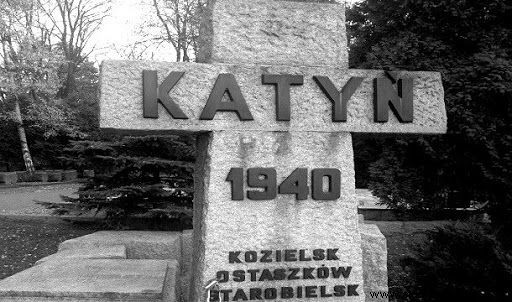
Among the victims of the Katyn massacre were Catholic and non-Catholic clergy
Ilków was doing well as an administrator - so well that in March 1939 he was promoted to senior chaplain with the rank of major. As a token of recognition for his work, he was also awarded the state award:the Silver Cross of Merit. Nevertheless, not everyone remembered him positively. Józef Gawlina, the Roman Catholic field bishop, who was also formally subordinate to the chief Greek Catholic chaplain of the Polish Army, had a lot of comments on the activities of Ilkow. Gawlina complained that Ilków dealt with his affairs behind his back. He maintained a good reputation in the Ministry of Military Affairs. He tried to be considered a "hyper-Pole" among Poles and "hyper-Ukrainian" among Ukrainians (such terms were used by the bishop in his memoirs). Moreover, Ilków was to criticize Gawlina and accuse him of "hatred towards the Ukrainians" in his correspondence with Rome. He himself tried, above all, not to endanger his fellows.
To what extent did this criticism objectively reflect reality? Did the prejudices against the Ukrainian subordinate not be revealed in the opinion of the field bishop? Perhaps this one too looked suspiciously at his Roman Catholic superior? Ilków himself did not have a chance to formulate a reply to the allegations, therefore these questions must remain unanswered.
With the arrival of September 1939, disagreements were quickly forgotten. Then Ilkov's life - like many others - begins to run away from the pages of history. Most likely, together with the army, he followed the combat route from Bzura to Lviv. On the way, he learned about the Soviet invasion of Poland. When Lviv capitulated on September 21, Ilków was arrested, identified in one of the transit camps and sent on with the transports of officers. It was probably in the late fall of 1939 that he ended up in Starobielsk.

The article is an excerpt from the book Priests of Katyn , which was recently released on the market by Znak Horyzont
publishing houseHe fought for survival in that camp-monastery until March 2, 1940 (according to other sources, he stayed there only until December 24, 1939). Together with nine other chaplains of the Polish Army, he was transported in a special transport to one of the prisons in Moscow. There is no data here either to determine what he was doing there and what was done with him. Did the Soviet torturers use torture? Were they questioning the same question for the thousandth time? Did they offer a pardon in exchange for cooperation?
The latter seems unlikely, since a few weeks later, most likely on April 11, Ilków was sent - this time for a short time - to the Kozelsk camp. He traveled from Moscow to Kozielsk in the company of his Orthodox friend, Szymon Fedorońka. The common fate made it possible not to think about religious divisions.
At that moment, every day from Kozielsk another group of officers was loaded into the carriages for deportation. Eventually Ilków heard his name.
Shadow of Katyn
The shadow of Katyn followed dr. Marian Wodziński until the end of his life. Two years after the end of the exhumation, in March 1945, the doctor was arrested by the NKVD. He was saved only thanks to the intercession of the management of the Jagiellonian University. However, he feared reprisal and re-imprisonment, so much so that he remained hidden. In July 1945, the Special Criminal Court in Krakow even issued an arrest warrant for him, published e.g. in the regime press.
Until the end of the year, Wodziński lived like a forest guerrilla. In December, he finally managed to escape from "people's" Poland. He never came back to her. He settled in London, where he started a family and worked as a doctor. He died in 1986.
Twenty-one years later, Fr. Mikołaj Ilków was posthumously promoted to the rank of Lieutenant Colonel of the Polish Army.
The article is an excerpt from the book Księża z Katyn, which was recently published on the market by the Znak Horyzont publishing house
